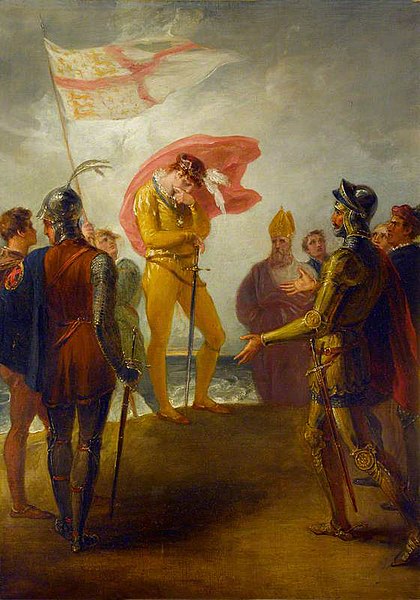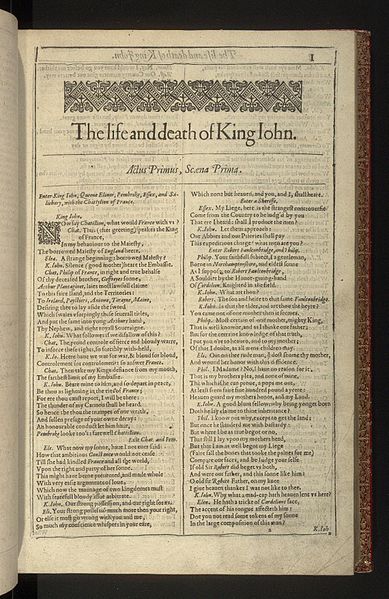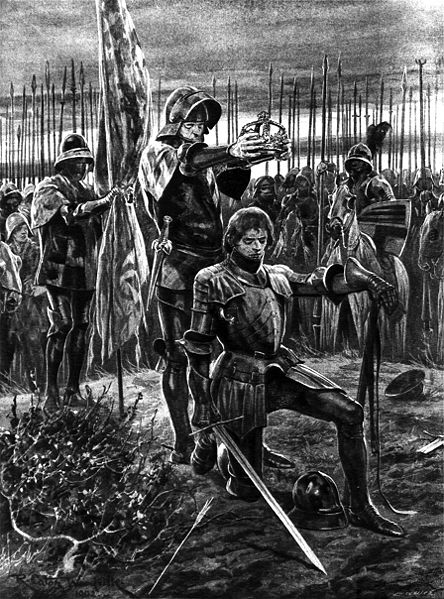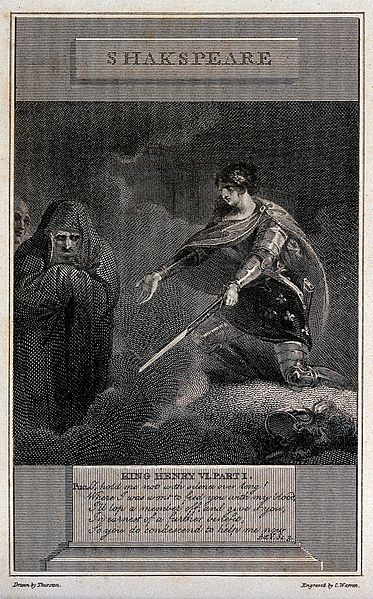The Life and Death of King Richard the Second, commonly called Richard II, is a history play by William Shakespeare believed to have been written around 1595. Based on the life of King Richard II of England, it chronicles his downfall and the machinations of his nobles. It is the first part of a tetralogy, referred to by some scholars as the Henriad, followed by three plays about Richard's successors: Henry IV, Part 1; Henry IV, Part 2; and Henry V.
The Entry of Richard and Bolingbroke into London (from William Shakespeare's 'Richard II', Act V, Scene 2), James Northcote (1793)
The Landing of Richard II at Milford Haven, William Hamilton (c.1793–1800)
Richard II Resigning the Crown to Bolingbroke, John Gilbert (1875-76)
The 1587 edition of Holinshed's Chronicles
In the First Folio, the plays of William Shakespeare were grouped into three categories: comedies, histories, and tragedies. The histories—along with those of contemporary Renaissance playwrights—help define the genre of history plays. The Shakespearean histories are biographies of English kings of the previous four centuries and include the standalones King John, Edward III and Henry VIII as well as a continuous sequence of eight plays. These last are considered to have been composed in two cycles. The so-called first tetralogy, apparently written in the early 1590s, covers the Wars of the Roses saga and includes Henry VI, Parts I, II & III and Richard III. The second tetralogy, finished in 1599 and including Richard II, Henry IV, Parts I & II and Henry V, is frequently called the Henriad after its protagonist Prince Hal, the future Henry V.
Opening page of the First Folio King John
'Henry VII crowned at Bosworth', by Richard Caton Woodville Jr.—a key moment in the 'Tudor myth'
'Joan of Arc conjures demons in Shakespeare's Henry VI' (engraving by C. Warren, 1805, after J. Thurston). "Next to her, Talbot is a blundering oaf, who furiously attributes her success to sorcery, whereas the audience knows that she has simply outfoxed him by superior military strategy." – H. A. Kelly (1970)
'Falstaff', (Adolfo Hohenstein)—according to Danby, "in every sense, the bigger man" than Hal








